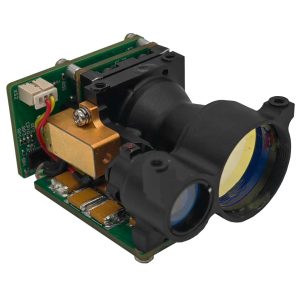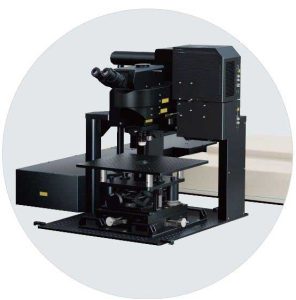Chapter 4: Types of Nd YAG Lasers
Nd YAG lasers can be classified into several types based on their operating mode and application. Every kind of Nd YAG laser has its unique properties and advantages, making it suitable for a specific range of applications.
Continuous-Wave Nd YAG Lasers Continuous-wave (CW) Nd YAG lasers operate continuously, producing a constant output power. CW Nd YAG lasers are typically used in industrial applications, such as welding and cutting, where continuous output power is required.
The output power of a CW Nd YAG laser can range from a few watts to several hundred watts, depending on the size of the gain medium and the pump source. CW Nd YAG lasers are typically water-cooled to remove the heat generated by the pump source and the gain medium.
Pulsed Nd YAG Lasers Pulsed Nd YAG lasers operate in a pulsed mode, producing high-energy pulses of laser light. Pulsed Nd YAG lasers are typically used in medical and scientific applications, such as laser surgery and spectroscopy.
The pulse duration of a pulsed Nd YAG laser can range from a few nanoseconds to several microseconds, depending on the type of Q-switch used. Pulsed Nd YAG lasers can produce peak powers in several kilowatts to several megawatts.
Q-Switched Nd YAG Lasers Q-switched Nd YAG lasers are a type of pulsed Nd YAG laser that uses a Q-switch to produce short, high-energy pulses of laser light. Q-switched Nd YAG lasers are typically used in industrial and scientific applications, such as material processing and laser-induced breakdown spectroscopy.
There are two main types of Q-switched Nd YAG lasers:  passive Q-switched and actively Q-switched. Passive Q-switched Nd YAG lasers use a saturable absorber, such as a Cr4+:YAG crystal, to produce short pulses of laser light. Actively Q-switched Nd YAG lasers use an external device, such as a Pockels cell or an acousto-optic modulator, to produce short pulses of laser light.
passive Q-switched and actively Q-switched. Passive Q-switched Nd YAG lasers use a saturable absorber, such as a Cr4+:YAG crystal, to produce short pulses of laser light. Actively Q-switched Nd YAG lasers use an external device, such as a Pockels cell or an acousto-optic modulator, to produce short pulses of laser light.
Mode-Locked Nd YAG Lasers Mode-locked Nd YAG lasers are a pulsed Nd YAG laser type that combines Q-switching and mode-locking to produce ultrashort pulses of laser light. Mode-locked Nd YAG lasers are typically used in scientific and medical applications, such as multiphoton microscopy and laser eye surgery.
The pulse duration of a mode-locked Nd YAG laser can be as short as a few femtoseconds, making it the shortest-pulsed laser currently available. Mode-locked Nd YAG lasers can produce average powers ranging from a few milliwatts to several watts.
High-Power Nd YAG Lasers High-power Nd YAG lasers are a type of Nd YAG laser that produces high output powers in the range of several kilowatts to several megawatts. High-power Nd YAG lasers are typically used in industrial applications, such as metal cutting and welding.
High-power Nd YAG lasers can be operated in a CW or pulsed mode, depending on the application. They are typically water-cooled to remove the heat generated by the pump source and the gain medium.
Miniature Nd YAG Lasers Miniature Nd YAG lasers are a type of Nd YAG laser that is small and lightweight, making it ideal for portable applications, such as field spectroscopy and remote sensing.
Depending on the application, miniature Nd YAG lasers can be operated in a CW or pulsed mode. They typically have a low output power in the range of a few milliwatts.
Chapter 5: Applications of Nd YAG Lasers
Nd YAG lasers have various applications in various industries, including medical, industrial, military, and scientific. Their unique properties, such as high peak power, high beam quality, and high efficiency, make them versatile and suitable for many applications.
Medical Applications
Nd YAG lasers are widely used in medical applications, such as laser surgery, dermatology,  and ophthalmology. In laser surgery, Nd YAG lasers are used for tissue cutting, coagulation, and ablating. Nd YAG lasers’ high peak power and short pulse duration allow for precise and efficient tissue ablation with minimal thermal damage to surrounding tissue.
and ophthalmology. In laser surgery, Nd YAG lasers are used for tissue cutting, coagulation, and ablating. Nd YAG lasers’ high peak power and short pulse duration allow for precise and efficient tissue ablation with minimal thermal damage to surrounding tissue.
In dermatology, Nd YAG lasers are used for tattoo removal, skin rejuvenation, and hair removal. The high peak power of Nd YAG lasers allows for effectively removing pigment and hair with minimal damage to the surrounding tissue.
In ophthalmology, Nd YAG lasers are used to treat glaucoma and cataracts. The high peak power of Nd YAG lasers allows for precise and controlled tissue removal with minimal damage to the surrounding tissue.
Industrial Applications
Nd YAG lasers are widely used in industrial applications, such as welding, cutting, and drilling. In welding, Nd YAG lasers are used for high-precision welding of metals and other materials. The peak power and beam quality of Nd YAG lasers allow for precise and efficient welding with minimal thermal damage to the surrounding material.
In cutting, Nd YAG lasers are used for high-precision cutting of metals, ceramics, and other materials. The peak power and beam quality of Nd YAG lasers allow for precise and efficient cutting with minimal thermal damage to the surrounding material.
Nd YAG lasers are used in drilling for high-precision drilling of metals, ceramics, and other materials. The peak power and beam quality of Nd YAG lasers allow for precise and efficient drilling with minimal thermal damage to the surrounding material.
Military Applications
Nd YAG lasers are widely used in military applications, such as laser range finding, target designation, and weapon guidance. In laser range finding, Nd YAG lasers are used to determine the distance between the laser and the target. The peak power and beam quality of Nd YAG lasers allow for accurate and reliable range finding even in adverse weather conditions.
to determine the distance between the laser and the target. The peak power and beam quality of Nd YAG lasers allow for accurate and reliable range finding even in adverse weather conditions.
In target designation, Nd YAG lasers are used to mark a target for laser-guided weapons. The peak power and beam quality of Nd YAG lasers allow for precise and reliable target designation even in adverse weather conditions.
In weapon guidance, Nd YAG lasers are used to guide laser-guided missiles and bombs. The peak power and beam quality of Nd YAG lasers allow for accurate and efficient advice of laser-guided weapons.
Scientific Applications
Nd YAG lasers are widely used in scientific applications, such as spectroscopy, microscopy, and laser-induced breakdown spectroscopy. Nd YAG lasers are used as a excitation source for fluorescence and Raman spectroscopy in spectroscopy. The peak power and beam quality  of Nd YAG lasers allow for precise and efficient excitation of fluorescent and Raman-active molecules.
of Nd YAG lasers allow for precise and efficient excitation of fluorescent and Raman-active molecules.
In microscopy, Nd YAG lasers are used for multiphoton microscopy, which allows for high-resolution imaging of biological tissues. The short pulse duration and high peak power of Nd YAG lasers provides for efficient and precise excitation of fluorescent molecules in biological tissues.
In laser-induced breakdown spectroscopy, Nd YAG lasers are used to produce plasma on the surface of a sample, allowing for analysis of the sample’s elemental composition. The high peak power of Nd YAG lasers provides for efficient and precise ablation of the model with minimal.
Chapter 6: Advantages of Nd YAG Lasers
Nd YAG lasers have many advantages over other types of lasers. Their unique properties make them suitable for a wide range of applications, and they are widely used in various industries, including medical, industrial, military, and scientific.
High Peak Power
Nd YAG lasers have a high peak power, which allows for precise and efficient ablation, cutting, and welding of materials. The high peak power also makes Nd YAG lasers suitable for laser range finding, target designation, and weapon guidance in military applications.
High Beam Quality
Nd YAG lasers have a high beam quality, which allows for precise and efficient cutting, welding, and drilling of materials. The high beam quality also makes Nd YAG lasers suitable for spectroscopy and microscopy in scientific applications.
High Efficiency
Nd YAG lasers are highly efficient, meaning they convert a high percentage of the input energy into laser output. This high efficiency makes Nd YAG lasers suitable for applications where energy efficiency is critical, such as in medical and industrial applications.
Long Pulse Duration
Nd YAG lasers have a long pulse duration, making them suitable for applications where the laser needs to be on longer. This makes Nd YAG lasers ideal for medical applications, such as laser surgery, where the laser needs to be on for several seconds or minutes.
Versatility
Nd YAG lasers are versatile and can be used for various medical, industrial, military, and scientific applications. This versatility makes Nd YAG lasers a popular choice for many different industries.
Stability
Nd YAG lasers are stable and reliable, which means that they can be used for long periods without frequent maintenance. This makes Nd YAG lasers suitable for industrial applications, where they must operate continuously for long periods.
Compact Size
Nd YAG lasers can be made in a compact size, which makes them suitable for applications where space is limited. This makes Nd YAG lasers ideal for medical applications, such as ophthalmology, where space is limited.
Low Maintenance
Nd YAG lasers require minimal maintenance, which makes them suitable for applications where frequent maintenance is not practical or cost-effective. This makes Nd YAG lasers ideal for industrial applications, where they need to operate continuously for long periods without the need for frequent maintenance.
Conclusion
Nd YAG lasers are widely used in various medical, industrial, military, and scientific industries. Their unique properties, such as high peak power, high beam quality, high efficiency, and long pulse duration, make them versatile and suitable for a wide range of applications. Nd YAG lasers are stable, reliable, and require minimal maintenance, making them a popular choice for many industries. The advantages of Nd YAG lasers make them an essential tool in many different applications, and their continued development and use are expected to be a significant focus in the future.
Chapter 7: Future of Nd YAG Laser Technology
Nd YAG lasers have been widely used in various industries for several decades, and their unique properties and benefits have made them a popular choice for many applications. However, the development of Nd YAG laser technology is still ongoing, and there is still much room for improvement and innovation.
One of the most significant areas of development for Nd YAG lasers is increasing their power output. Higher power output will enable more efficient cutting, welding, and other industrial applications and increase the range and effectiveness of military applications. Several techniques are being developed to increase the power output of Nd YAG lasers, such as optimizing the pump source, increasing the cooling efficiency, and improving the resonator design.
Another area of development for Nd YAG lasers is improving their beam quality. Higher beam quality will enable more precise cutting and welding and improve the accuracy of laser range finding and target designation in military applications. Techniques such as adaptive optics and beam shaping are being developed to improve the beam quality of Nd YAG lasers.
In addition to increasing power output and improving beam quality,  researchers are exploring new applications for Nd YAG lasers. For example, researchers are investigating using Nd YAG lasers for biomedical imaging, such as imaging blood vessels and detecting cancer cells. Nd YAG lasers are also being explored for use in laser propulsion, where they could propel spacecraft with a beam of laser light.
researchers are exploring new applications for Nd YAG lasers. For example, researchers are investigating using Nd YAG lasers for biomedical imaging, such as imaging blood vessels and detecting cancer cells. Nd YAG lasers are also being explored for use in laser propulsion, where they could propel spacecraft with a beam of laser light.
Finally, the development of Nd YAG laser technology is also being driven by the need for more compact and cost-effective systems. This will make Nd YAG lasers more accessible to smaller companies and research groups, enabling them to take advantage of the benefits of Nd YAG lasers in their applications. Techniques like fiber laser pumping and microchip laser technology are being developed to create more compact and cost-effective Nd YAG laser systems.
In conclusion, Nd YAG lasers have been an essential tool in various industries for several decades, and their unique properties and benefits have made them a popular choice for many applications. The development of Nd YAG laser technology is ongoing, and there is still much room for improvement and innovation. Increasing power output, improving beam quality, exploring new applications, and creating more compact and cost-effective systems are all areas of focus for future developments in Nd YAG laser technology. As the technology continues to improve and advance, the applications of Nd YAG lasers are expected to grow and expand, revolutionizing many industries and enabling discoveries and innovations.







